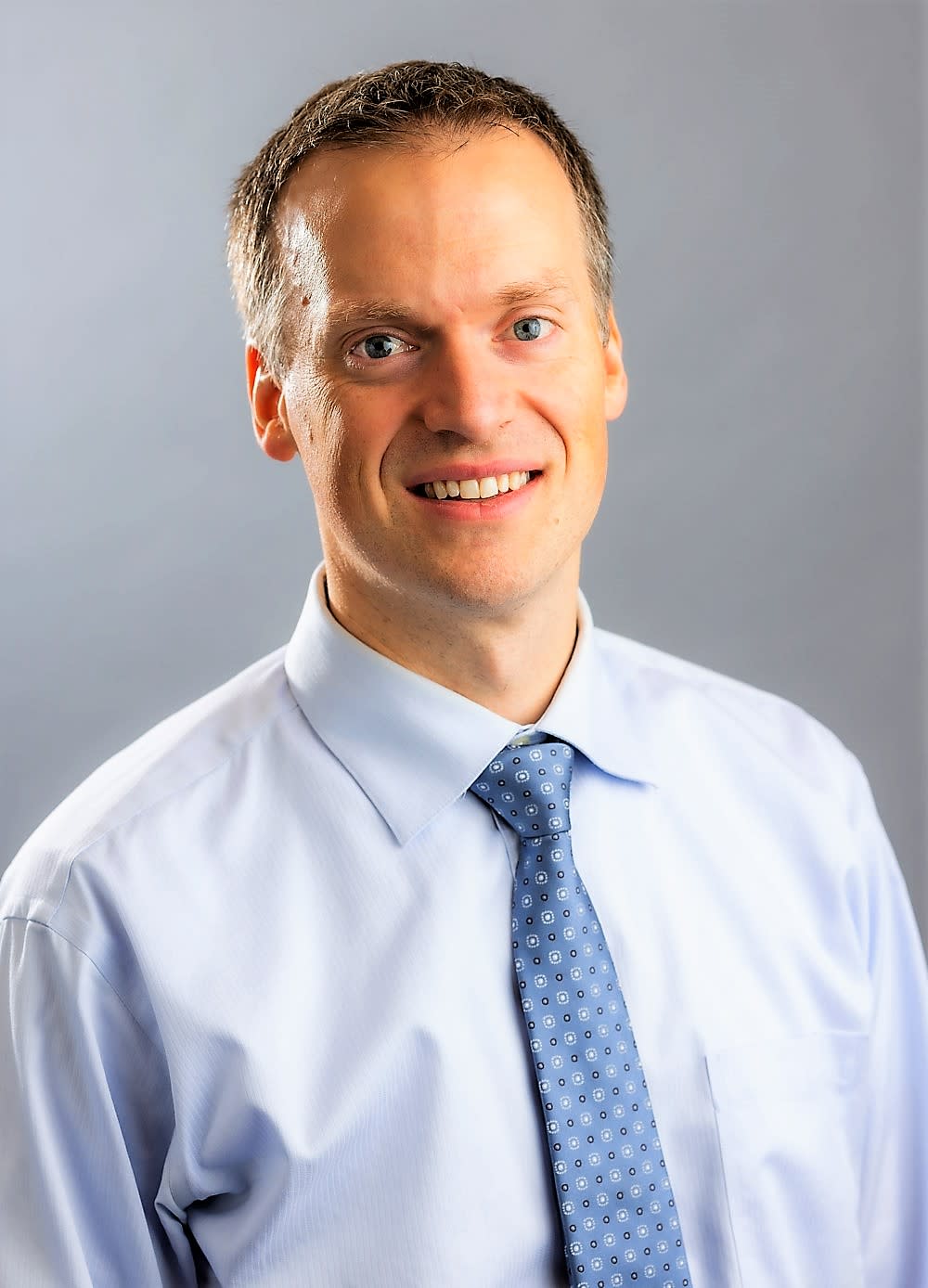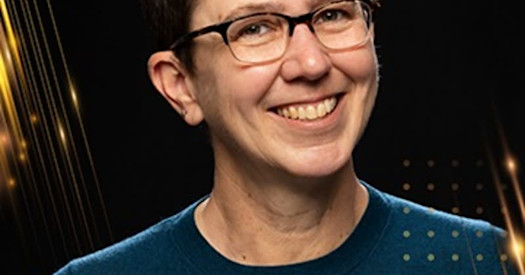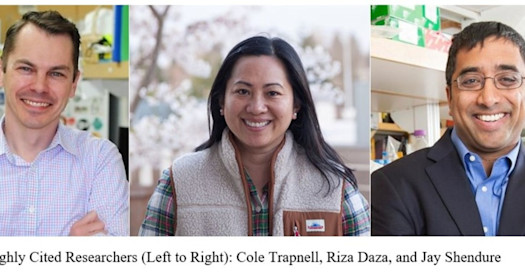 Dr. Andrew Stacey: "I realized I liked coming up with the problems, not just solving someone else’s problems"
Dr. Andrew Stacey: "I realized I liked coming up with the problems, not just solving someone else’s problems"
BBI Faculty Conversations: Today we are joined by BBI Member Dr. Andrew Stacey, Associate Professor in the Department of Ophthalmology at the University of Washington and Seattle Children’s.
BBI: Tell us how you got involved in medicine and your area of research?
Dr. Stacey: I have an undergraduate degree from Brigham Young University in Statistics. I was thinking a lot about doing a PhD in statistics, but I realized I liked coming up with the problems, not just solving someone else’s problems. During medical school, I fell in love with surgery. I had never known a surgeon, so I was not expecting to enjoy it! I eventually learned about ophthalmic surgery and cancers of the eye, and was quickly interested in the field. I completed my medical school at the Ohio State University, and followed that with residency at University of Michigan at the Kellogg Eye Center.
At Kellogg, I started to work with Hakan Demirci, the ocular oncologist at the University of Michigan. Ocular oncology is a very small subspecialty of ophthalmology, and there aren’t many of us, but I was lucky to train where I could learn the specialty. After a fellowship at Moorfields Eye Hospital in London, I began research in the two most common forms of intraocular cancer: retinoblastoma in children and melanoma in adults.
BBI: What an amazing journey. Could you tell us about your work in pediatric cancers with BBI?
Dr. Stacey: In kids, I primarily treat and research an eye tumor called retinoblastoma. Retinoblastoma is a rare cancer in general, though it is the most common eye cancer in children. I only see about 5-10 newly diagnosed patients a year. That ends up being a very busy practice, because these kids require treatment every month for years. Retinoblastoma is a very survivable cancer in developed countries. Close to 98 percent of children diagnosed with retinoblastoma will live. Many still lose vision or lose eyes, but they live. This is very different from many lower income countries where most children with retinoblastoma die.
“IT IS HARD TO THINK OF ANOTHER DISEASE WITH AS LARGE A DISPARITY BETWEEN HIGH-AND-LOW INCOME COUNTRIES AS RETINOBLASTOMA.”
BBI: That’s quite a difference in survival between rich and poor countries.
Dr. Stacey: In fact, it is hard to think of another disease with as large a disparity between high-and-low income countries as retinoblastoma. Though this has been known generally in ophthalmology, getting enough data to understand the true disparity was challenging because the disease is relatively rare. We began to address this problem a few years ago.
About five years ago we started to develop a consortium of eye cancer centers across the world to pool data. We need large numbers of treatment centers to get enough data to study this rare disease effectively. In the end, we enrolled enough centers to collect data from over 200 hospitals from 160 countries. This allowed us to identify for the first time the actual disparity, showing exactly how deadly retinoblastoma is, based on the average income of a country. The most exciting part of this is that we have this group of people across the world who want to answer questions about retinoblastoma and are very willing to work together.
Our project with BBI came out of this consortium. Retinoblastoma is a genetic cancer. There are two ways to develop retinoblastoma. We think of this disease as the quintessential “two-hit” cancer. We know that to develop retinoblastoma, there needs to be two mutations in a cell in the retinoblastoma gene, one in each chromosome. There are two ways for that to happen. One way is that each mutation happens independently and spontaneously. These kids generally develop one retinoblastoma tumor in one eye.
However, sometimes a baby can be born already with the first mutation. If a parent has a germline mutation in the retinoblastoma gene, that parent has a 50 percent chance of passing that mutation on to their child. A child with this mutation already has the first “hit,” and all they need is a second “hit” to happen. In these circumstances, these kids often have multiple tumors, often in both eyes. Children can also be born with a spontaneous germline mutation without any family history.
“THIS IS A VERY SURVIVABLE CANCER, AND THE EARLIER WE KNOW THE DISEASE STATUS OF A CHILD, THE EARLIER WE CAN TREAT THEM.”
We do not have a great way of identifying which kids born into families with retinoblastoma gene mutations have the mutation. This is important because this is a very survivable cancer, and the earlier we know the disease status of a child, the earlier we can treat them.
Patients and families are very confident in our ability to treat retinoblastoma, so much so that they are having children with a known 50 percent risk of developing childhood cancer. There aren’t many diseases where this is happening. Actually, the incidence of retinoblastoma is increasing in the world, because families are having more children than they used to have before we were able to treat this disease. This is a deleterious allele in the population that should be decreasing in the population, but a fatal mutation is increasing because of medical advancement. This is in itself an incredible fact!
BBI: Wow! An otherwise fatal gene mutation that is actually increasing in the human population because of treatment options.
Dr. Stacey: Exactly. But, this presents issues because we have more and more families with children who have retinoblastoma. Right now, when a baby with a possible germline mutation is born, we see them in the first week. We dilate their eyes and, if we see tumors, we take them to the operating room and do an exam under anesthesia and do treatments. If we don’t see tumors, we keep looking at their eyes every couple of weeks and, as they get older, we need to do these under anesthesia. By the time they are a few months old, we have put them under anesthesia multiple times. The blood tests we use to test for the germline mutation takes 3 to 4 months. While we wait on those results, we have no choice but to put babies under anesthesia. We know that anesthesia is risky and may have neurocognitive effects later in life, but we have no choice when there is risk of cancer and death.
The question is, “What if there was another way?” We wondered if germline information could also be available in cell free DNA. We had a hypothesis that we could find this in maternal serum in the same way we do noninvasive maternal screening for other diseases. We submitted a grant to the BBI to collect serum from families and newborns with retinoblastoma to try and identify the gene mutation in maternal cell free DNA. We received this grant about two years ago, collected samples and are starting to process the data. We are seeing that we are able to identify fetal cell free DNA in the mother that is consistent with the child’s future diagnosis of germline retinoblastoma. If we can get this to work, this is a huge change in our current practice. These data could help us save babies without the mutation from additional anesthesia after they are born.
Finally, this also opens up opportunities in the future to ask what interventions we might propose for newborns we know have the cancer mutation. Is there something we can do for them now before they ever develop tumors? We have never had this information before or been able to ask what we might do to someday prevent these tumors from occurring in the first place.
Check back in soon for more chats with BBI members from our partner institutions. Get an inside view into their work and where they think the field of precision medicine is heading next.


